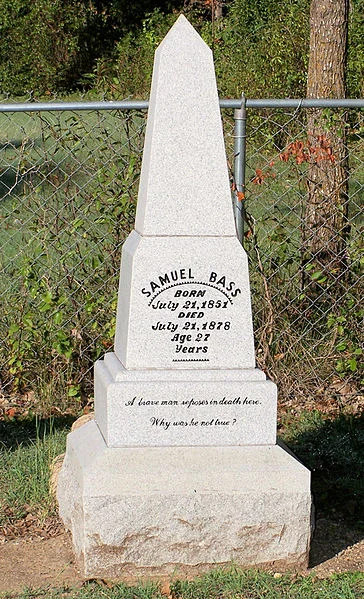What is certain, however, is that after a murderous raid of
a neighbor’s Clarksville homestead in April of 1941, Denton rallied his militia
of Rangers. By May, a company of Tarrant’s 4th Brigade militia under Capt.
Bourland left Fannin County to recover livestock and exact revenge upon the
raiders. Captain Denton, commanding a small detachment of scouts with Henry
Stout, located Indian encampments along Keechi Village Creek (near present-day Arlington) and
proceeded to raid then burn the first two villages with little resistance.
Denton and Stout split into separate units to
scout further, stumbling upon a sprawling streamside community now alerted to
their presence. Stout cautiously halted his men but the fiery-tempered Denton fearlessly charged
ahead into an ambush by rallying braves. In the fire-fight, Captain Denton
was killed immediately and Stout was wounded while their unit scrambled to
withdraw. Learning that the Keechi villages contained over a thousand braves,
now returning from a hunt, Tarrant called the retreat. The fleeing brigade
buried Denton’s body under a tree beside the creek as they hastily crossed into
what would become Denton County, later so named in 1846 to honor their fallen
hero.
Yet the
story of John B. Denton does not end with the Battle of Village Creek. When a grave was
discovered by some boys along Oliver Creek in Denton County in 1856, Denton
County rancher John Chisum (who would become a legendary
cattleman and one namesake of the famed “Chisholm Trail“) recalled the stories of
Denton’s death and burial told to him by his father Clabe, also a member of
Denton’s Texas militia company. The cattleman investigated with survivors of
the raid, who identified the bones by the blanket they were wrapped in, an old
broken arm, and some gold teeth. Chisum took the remains back to his home
and buried the box in a corner of his yard to await reclamation. When Chisum
sold his property to J.M. Waide years later, he left a written account authenticating
the grave with his friend J. W. Gober.
By 1900, the
Old Settler’s Association of Denton County
wanted to bury John B. Denton in the town that proudly bears his name. They placed an advertisement in the paper which John Gober answered, producing the letter written by Chisum authenticating
the remains. These remnants of Captain Denton were exhumed once again and
buried during a large ceremony on the southeast corner of the Denton County Courthouse lawn
on November 21, 1901, then 60 years after Capt.
Denton’s death and 44 years after the city of Denton was founded in 1857.
There are also ghost stories of Denton’s restless spirit, tales
that are best told another time, but the colorful story of Captain Denton
nevertheless reminds us that our history can inform intriguing insights into our
present and future.
















